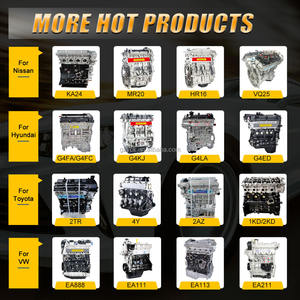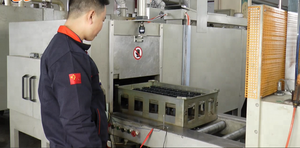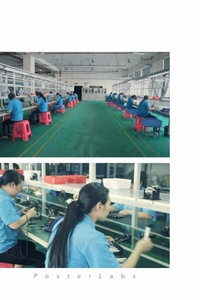(118675 products available)






































































































































































































































Gasoline 1.2 engines
Gasoline 1.2 engines, also known as petrol engines, are internal combustion engines that burn petrol. Typically, these engines have a good power-to-weight ratio, producing relatively high power for their size. This makes them suitable for light vehicles needing better performance. Additionally, 1.2 gasoline engines have a smooth and responsive power delivery. They are characterized by their smooth and linear power delivery. Drivers can expect a consistent and predictable response when accelerating. Furthermore, gasoline 1.2 engines have lower torque than diesel or larger displacement engines. The engines produce power but may require more gear changes to maintain momentum.
Diesel 1.2 engines
Diesel 1.2 engines are less common because of the small size of the engine. However, some manufacturers use them for specific vehicle types. Diesel 1.2 engines are known for their high torque at low RPMs. This makes them suitable for heavy vehicles and provides good pulling power. The high torque allows for better acceleration and pulling loads without straining. Additionally, diesel 1.2 engines are fuel efficient. They provide better fuel economy compared to gasoline engines. The fuel efficiency is mainly useful in larger or heavier vehicles, providing better mileage and lowering running costs.
Turbocharged 1.2 engines
Turbocharged 1.2 engines are smaller, lighter, and more fuel-efficient compared to larger engines. Manufacturers include turbo 1.2 engines in vehicles where they want to improve performance without compromising fuel economy. The turbocharged engines have a good power-to-weight ratio. They generate power comparable to larger naturally aspirated engines. This makes them suitable for vehicles that need a punchy performance or a sports feel. The power delivery from the turbocharged 1.2 engines can be peaky. The engines offer a sudden surge in power, making them suitable for lightweight vehicles that need sudden power.
There are several specifications to consider when discussing the 1.2 engines. They include the engine size, number of cylinders, cylinder arrangement, valve arrangement, compression ratio, and fuel system.
Engine Size
1.2 engines have a size of 1.2 liters or 1200 cc.
Number of Cylinders
Most 1.2 engines have 4 cylinders. However, some engines can have 3 or 6 cylinders.
Cylinder Arrangement
This is the layout of the cylinders. Most 1.2 engines have a cylinder arrangement that is in line. However, some engines have a cylinder arrangement in a V shape.
Valve Arrangement
Most 1.2 engines have 2 valves per cylinder. However, some engines have 4 valves per cylinder.
Compression Ratio
1.2 engines have a compression ratio that ranges between 9:1 to 11:1.
Fuel System
1.2 engines use a petrol fuel system. They have a direct injection system or a multi-port fuel injection system.
1.2 engines require regular maintenance for them to have a long lifespan and optimal performance. Here are a few maintenance tips:
Choosing a 1.2 engine requires careful consideration of several factors to ensure that it meets specific needs and preferences. Here are some key factors to consider when choosing a 1.2 engine:
Firstly, consider the driving needs and habits. For city driving or short commutes, a 1.2 engine offers adequate power. If one frequently carries heavy loads or does a lot of highway driving, a more powerful engine might be needed.
Secondly, consider fuel efficiency as a 1.2 engine, which is generally more fuel efficient than larger engines. Check the engine's fuel economy ratings to ensure it meets the efficiency needs. A slight difference in fuel economy can significantly impact long-term costs.
Another factor to consider is the engine's power output and torque. While 1.2 engines are suitable for most everyday driving, their power output varies. For better performance and responsiveness, consider engines with higher power output and torque.
Additionally, consider transmission options when choosing a 1.2 engine. Some vehicles offer manual transmissions, while others provide automatic or CVT transmissions. Consider the preferred driving experience and transmission style when choosing the engine.
Lastly, consider the budget and cost of ownership. 1.2 engines are generally more affordable than larger engines. Apart from the initial purchase price, consider long-term costs such as fuel, insurance, and maintenance when choosing an engine.
Replacing 1.2 engines can be a complex task that typically requires mechanical expertise, specialized tools, and adherence to safety standards. Here is a general guide on how to replace a 1.2 engine:
Preparation
Read the service manual for the specific vehicle to understand the procedure and precautions for replacing the engine. Gather all the necessary tools, including wrenches, sockets, ratchets, engine hoist, and jack stands. Drain the engine oil and coolant and remove all the necessary components, such as the air intake system, exhaust system, electrical connections, and engine-mounted accessories like the alternator, power steering pump, and air conditioning compressor.
Remove the Old Engine
Secure the vehicle with jack stands and raise it according to the manufacturer's recommendations. Disconnect the fuel lines and start the engine and vacuum hoses. These are connected to the engine and can pose safety risks and leaks when removed. Lift the engine using an engine hoist and carefully remove it from the engine bay.
Install the New Engine
Transfer all the necessary components from the old engine to the new one, including the intake manifold, exhaust manifold, engine mounts, and accessories. Lower the new engine into the engine bay using the hoist and align it with the engine mounts. Once aligned, secure the engine with the engine mounts.
Reassemble and Finalize
Reconnect all the previously disconnected systems, including the cooling system, electrical connections, and fuel systems. Refill the engine oil and coolant according to the manufacturer's specifications. Start the engine and check for any leaks or unusual noises. Allow the engine to reach operating temperature and check for leaks or issues. Ensure all systems function correctly.
Q1: How many cylinders does a 1.2 engine have?
A1: Typically, a 1.2 engine has three to four cylinders, which help generate power to drive the vehicle.
Q2: Is a 1.2 engine good for beginners?
A2: Yes, a 1.2 engine is good for beginners. It's not too powerful and allows new drivers to learn safely and confidently.
Q3: Does a 1.2 engine require special fuel?
A3: No, a 1.2 engine does not require special fuel. Most 1.2 engines run on regular petrol or gasoline, which is commonly available.